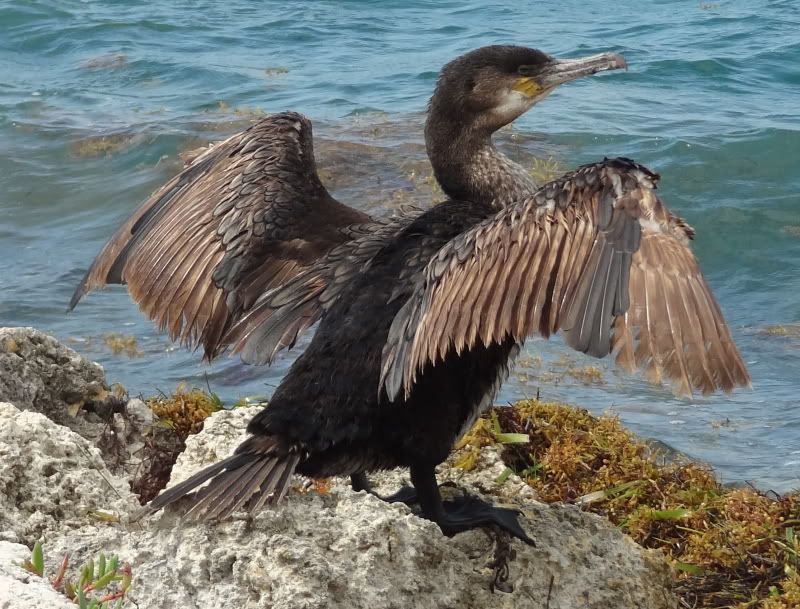
[ Follow Ups ] [ Post Followup ] [ TAS BirdBoard ] [ FAQ ]
Posted by Robin Diaz on 12:30:22 04/06/12

Liz must have run out of Krazy Glue today (4/6) because the Great Cormorant wasn't on its favorite rock at the lighthouse jetty. Instead, it was drying its wings on rocks between two fishing platforms at the west end of Area D.
It's obviously molting so I looked up the molt limits to see if there is a timeline. As seen in the photo, the inner primaries and tertials are new. Since the molt isn't synchronized (left and right wings are at slightly different stages), it will be interesting to see how much it will molt before heading out. There are also 2 new rectrices and a 3rd one growing in.
The Great Cormorant pages in Peter Pyle's _Identification Guide to North American Birds Part II_ make my eyes spin but apparently the Cape Florida bird is molting just as it's supposed to from February to May. Like many large and long-winged birds that need to fly to survive, this bird uses the "staffelmauser" molting strategy to replace sets of primaries and secondaries in waves. The photo shows primaries 1-4 replaced or coming in, while the old juvenile primaries are worn and abraded, as are the secondaries.
This is way too much information! Perhaps last night's south winds encouraged wintering and migrant birds to head north because the park was very quiet this morning. Studying the cormorant was the next best entertainment.
[ Follow Ups ] [ Post Followup ] [ TAS BirdBoard ] [ FAQ ]